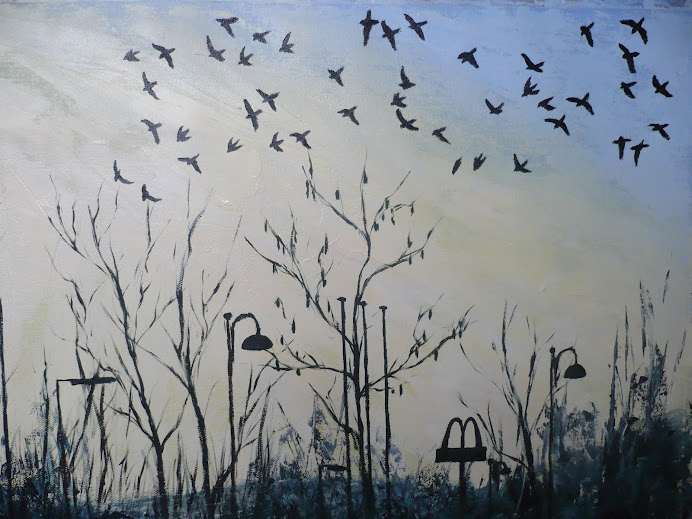
Having never painted onto perspex before, I wanted to be sure that the logistics of it were thought through before starting the full size painting. My plan was to incorporate three layers of paint - the canvas, the front of the perspex and also the back of the perspex - but I wanted to make sure that painting on the back of the perspex would actually contribute something constructive to the image.
This first photo shows one of the portraits roughly painted onto the front layer of perspex. There are strands and splatters of green on the back layer, representing the pond weed, whilst the dark paint underneath is a layer of canvas painted with acrylic, representing the mud. I was satisfied at this stage that these three layers worked well together.
Logistically I had a problem with how to stick the canvas and perspex together to made a solid and sturdy whole. Initially I'd thought to use glue around the edges, but this didn't seem satisfactory as I thought the glue would be visible. Researching further into the work of Brendan Stuart Burns, who also uses perspex in his aquatic paintings, I decided to emulate his technique and completely embed the perspex in paint, thereby using the paint as an adhesive.

This second photo shows the thick layer of paint that was prepared ready to embed the perspex into. I mixed in a lot of PVA glue to make absolutely sure that the two surfaces would bond (Burns also uses wax in his oil and perspex paintings which contributes to the adhesive properties).
This third photo shows the plastering tool, used as Gerhard Richter does, to drag the paint across the canvas - it also served to mix the paint and glue together, creating an even distribution of glue.
The final photo shows the small study embedded in the paint. The effect that I'm most pleased with is that the bottom layer of paint still looks wet and fluid. This is very different to the study shown in the first photo above, where the texture of the canvas can be seen through the transparent perspex. Though the full three dimensional effect isn't noticeable in a photo of the study it is very effective when seen in the flesh. The perspex itself is 5 mm thick, so there is quite a contrast between the front and the back layers, mimicking the effect of looking through water. Seeing the three layers of paint interacting together validated my decision to paint on the back of the perspex, as it would have been impossible to paint the strand and splatters of pond weed onto the wet layer of paint used on the canvas.



No comments:
Post a Comment